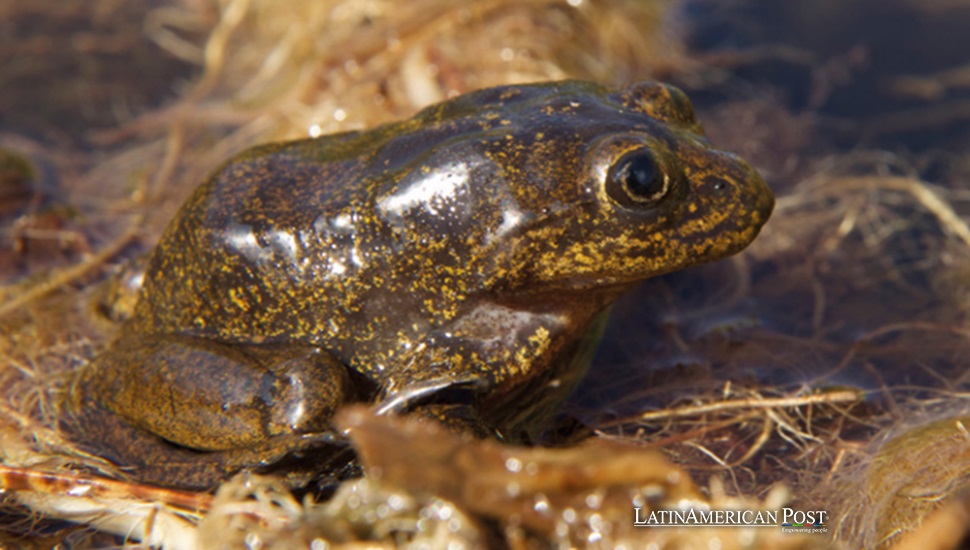Chilean Loa Frogs Escape Extinction and Begin Their Journey Home

Once on the verge of extinction, Chile’s critically endangered Loa water frogs are making a historic return to their natural habitat in the world’s driest desert. Conservationists are racing against time to restore the fragile ecosystem that nearly wiped them out.
A Fragile Species Faces Extinction in a Harsh Desert
The Loa water frogs, tiny amphibians that call one of the harshest environments on Earth home, were on the brink of extinction just a few years ago. These frogs inhabit the Loa River, which runs through Chile’s Atacama Desert—the driest desert in the world. Despite their resilience, they nearly disappeared due to human activities like water extraction for mining, agriculture, and urban development, combined with the growing threat of climate change.
In 2019, the situation became critical. As their habitat was drained and degraded, only a handful of these frogs remained, clinging to life in a river that could no longer sustain them. Without swift intervention, the Loa water frogs would have disappeared forever, another casualty of environmental neglect in a rapidly changing world.
The frogs’ plight captured the attention of scientists and conservationists in Chile, who quickly mobilized to prevent the species from vanishing. Their efforts led to the rescue of the last remaining frogs and the beginning of an ambitious plan to bring them back from the brink of extinction.
A New Hope for Loa Frogs
When the Loa frogs were rescued in 2019, only 14 were healthy enough to be transported to the Parquemet Zoo in Santiago, where herpetologist Osvaldo Cabeza spearheaded a critical breeding program. These frogs were malnourished and sick, barely clinging to life. The first step was to nurse them back to health, hoping they could eventually reproduce and rebuild their population.
The efforts at Parquemet Zoo paid off. Under Cabeza’s careful watch, the frogs began to thrive, eventually reaching 500 individuals. This success was a significant milestone, but it was only the beginning. Cabeza and his team knew that true victory would only come when these frogs could be safely returned to their natural habitat.
“If we do not recover this habitat, it is very likely that the frogs will become extinct in the wild and will only exist in laboratories,” Cabeza warned Reuters. His words underscored the fragile nature of the situation—while the frogs had been saved in captivity, their long-term survival depended on restoring their natural environment.
Collaboration Between Conservationists and Industry
The road to recovery for the Loa frogs isn’t just about protecting the species—it’s also about restoring an ecosystem that human activities have severely damaged. The habitat they once thrived in was decimated by water extraction for mining and agriculture, making it nearly impossible for the frogs to survive in the wild. To address this, a new initiative was launched to unite the public and private sectors in a joint effort to rehabilitate the Loa River.
Chile’s state-run copper giant, Codelco, is a significant player in this effort. It has partnered with the local government to create the El Loa Biodiversity and Conservation Center (CENByC). This facility, located in Calama in northern Chile, protects the Loa water frogs and encourages their reproduction. The center is a haven for the frogs and a symbol of hope for restoring the Loa River ecosystem.
“The frog is a survivor. It has proven quite resilient to all the adverse conditions it has been exposed to,” Francisca Oliva, the center’s coordinator told Reuters. Her optimism is shared by many involved in the project as they work to restore the frogs’ habitat and protect them from future threats.
In addition to establishing a new protected zone in Calama, the government is working with companies and local citizens to clean and safeguard the damaged habitat. It’s a monumental task, but one that is seen as essential if the Loa frogs can survive in the wild.
The Future of the Loa Water Frogs
The recent relocation of a dozen Loa water frogs from Santiago to Calama marked a significant step in the effort to return the species to its natural habitat. Transported in temperature-controlled containers and carefully monitored by scientists, these frogs represent the first group to begin the journey back to the wild.
However, this is just the beginning of a long and uncertain process. Conservationists face many challenges in restoring the Loa River and ensuring it can support the frogs again. Climate change continues to exacerbate the region’s water scarcity, while the demands of mining and agriculture place further pressure on the fragile ecosystem.
Despite these obstacles, there is hope. The creation of the El Loa Biodiversity and Conservation Center and the Chilean government’s commitment to protecting the frogs’ habitat are positive signs that progress is being made. But the journey home for the Loa water frogs is far from over.
“The future is hopeful, but there’s still a lot of work to be done,” Cabeza acknowledged. For now, the frogs remain in a transitional state, with conservationists closely monitoring their health and habitat conditions. The ultimate goal is to return them to the wild in more significant numbers, ensuring they can once again thrive in their natural environment.
The story of the Loa water frogs is a reminder of the delicate balance between human activity and the natural world. It highlights the incredible resilience of a species that has been pushed to the brink of extinction and the determination of those working to bring them back. As the frogs begin their long journey home, they carry with them the hopes of a region—and a world—that is starting to recognize the importance of protecting its most vulnerable inhabitants.
Also read: Smart Hydroponic Gardens in Bolivia Transform Urban Agriculture
The rescue and recovery of the Loa water frogs is an extraordinary example of how concerted efforts can bring a species back from the brink of extinction. With continued collaboration between conservationists, the government, and industry, there is hope that these frogs will one day return to the wild and reclaim their place in Chile’s unique ecosystem. As the fight to protect them continues, their story serves as both a warning and an inspiration for the future of conservation.




